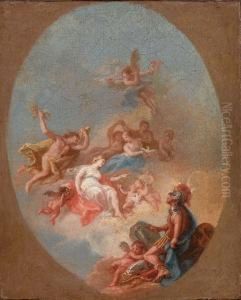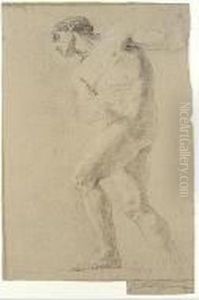Giulio Traballesi Paintings
Giulio Traballesi was an Italian painter and decorator, born in 1727 in Florence, Italy. His work is notably associated with the late Baroque and early Neoclassical periods, reflecting the transition in artistic styles during the 18th century. Traballesi is particularly remembered for his contributions to the decoration of interiors, including frescoes and other wall paintings, which exhibit both the ornate qualities of the Baroque and the emerging clarity and simplicity of Neoclassicism. His artistic career was largely based in his hometown of Florence, where he contributed to the embellishment of various churches and palaces, showcasing his adeptness in handling mythological and religious themes.
Throughout his life, Traballesi was deeply involved in the Florentine art scene. He was a member of the Accademia delle Arti del Disegno, an institution that played a crucial role in the artistic community of Florence. This affiliation not only provided him with connections to influential patrons but also allowed him to be at the forefront of the artistic innovations of his time. Traballesi’s work was characterized by its dynamic compositions, vibrant color palette, and the emotional depth of its figures, qualities that made him a sought-after decorator during the 18th century in Italy.
Despite his success, Traballesi's work is not as widely recognized today as that of some of his contemporaries. However, his contributions to the art of fresco painting and interior decoration remain important for understanding the development of Italian art from Baroque to Neoclassicism. Giulio Traballesi passed away in 1812, leaving behind a legacy of artistic works that continue to be studied for their aesthetic and historical significance. His death marked the end of an era in Florentine art, but his works survive, preserving the elegance and dynamism of 18th-century Italian art.


